Endive is a popular vegetable used in salads, soups, and other dishes.
It has a slightly bitter taste that helps to balance out the flavors of many recipes.
Unfortunately, endive can be difficult to find in some areas or it may not always fit into your budget.
If you’re looking for an alternative to endive, there are several options that can provide similar flavor and texture without breaking the bank.
In this article, I will discuss 11 of the best substitutes for endive so you can enjoy all your favorite dishes with ease!
What is Endive?
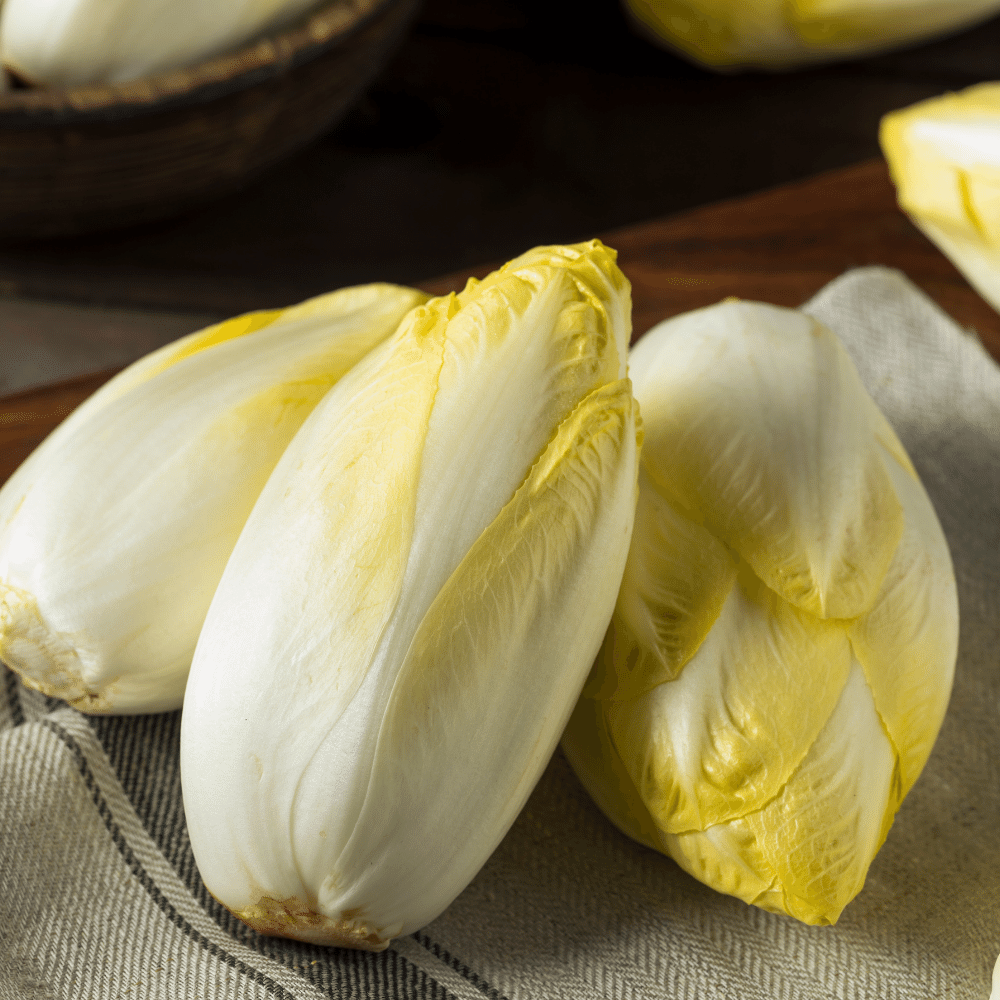
Endive (pronounced EN-dive) is a leafy green vegetable that belongs to the chicory family.
It has long, narrow leaves with a slightly bitter flavor and crunchy texture.
Endive can be eaten raw or cooked, and is often used in salads, soups, stews, and other dishes.
Endive comes in two main varieties: curly endive (also known as frisée) and Belgian endive (also known as witloof).
- Curly endive has bright green leaves that are tightly curled at the edges; it has a more pronounced bitterness than Belgian endive.
- Belgian endives have pale yellow-green leaves that are smooth on the edges; they have a milder flavor than curly endives. Both types of endives can be found year-round in most grocery stores.
When selecting an endive, look for firm heads with crisp leaves that are free from brown spots or wilting.
Store them unwashed in the refrigerator for up to five days before using them in recipes.
When preparing them for cooking or eating raw, trim off any tough stems and rinse thoroughly under cold water to remove any dirt or sand particles before use.
The 11 Best Substitutes For Endive
Endive is a leafy green vegetable with a slightly bitter flavor and crunchy texture.
If you’re having trouble finding endive, here are 11 great substitutes that will give you the same taste and texture:
1. Radicchio

Radicchio is a leafy vegetable with deep red leaves and white veins that form a head.
It has a slightly bitter taste, but when grilled or roasted, the flavor mellows out to become more sweet and nutty.
This Italian chicory is an excellent substitute for endive in salads, as it adds color and crunch to any dish.
It can also be used as an ingredient in soups, stews, risottos, pasta dishes, and even pizzas.
When cooked properly, radicchio develops a tender texture that pairs well with other ingredients like bacon or cheese.
For those looking for something unique to add to their meals without sacrificing flavor or texture, radicchio is definitely worth trying!
2. Watercress
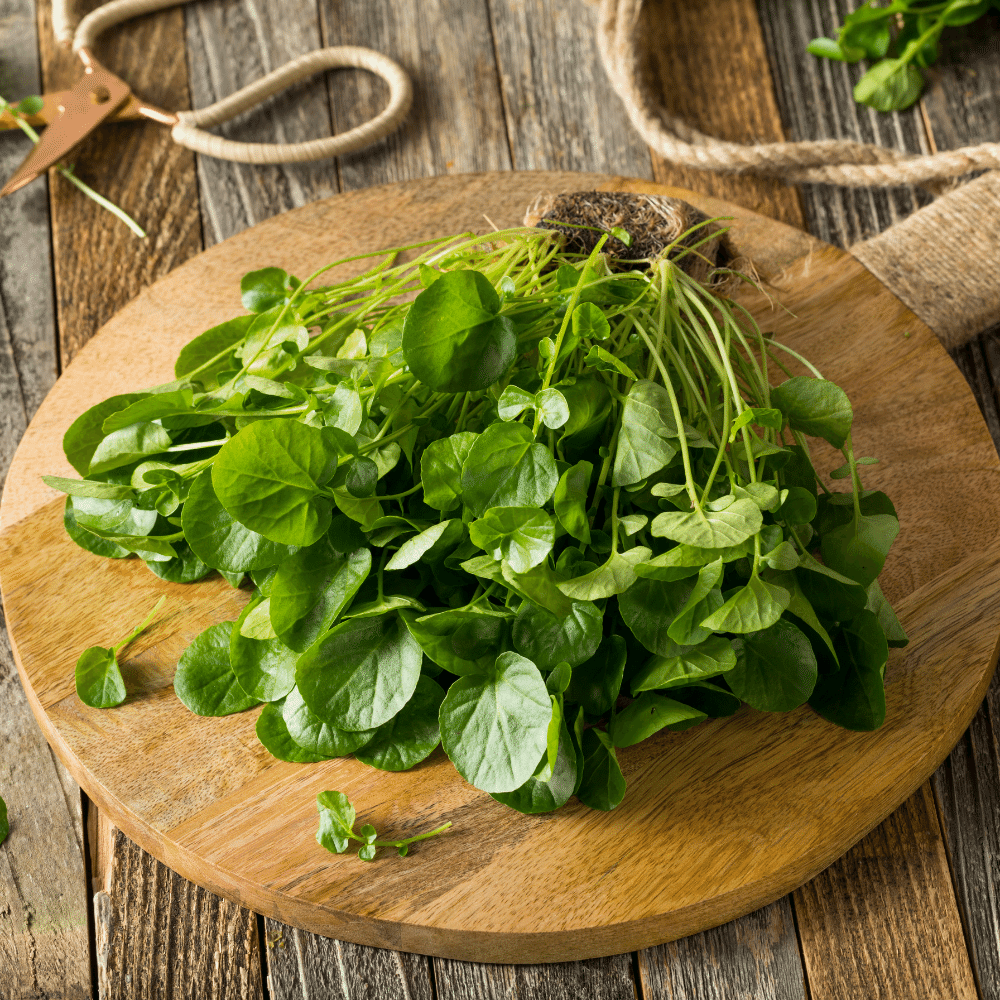
Watercress is a leafy green vegetable that has been enjoyed for centuries.
It belongs to the Brassicaceae family and is native to Europe and Asia, where it grows in water or moist soil.
Watercress has a mild peppery flavor with a hint of sweetness, making it an excellent replacement for endive in salads and sandwiches.
The leaves are tender yet crunchy, adding texture to any dish.
It also contains high levels of vitamins A and C as well as calcium, iron, magnesium, phosphorus, potassium, zinc and other essential minerals.
Watercress can be eaten raw or cooked; when cooked it takes on a nutty flavor that pairs nicely with fish dishes or creamy soups.
For those looking for an alternative to endive in their recipes – try watercress! Its unique taste will add depth of flavor while providing valuable nutrients at the same time.
3. Napa Cabbage
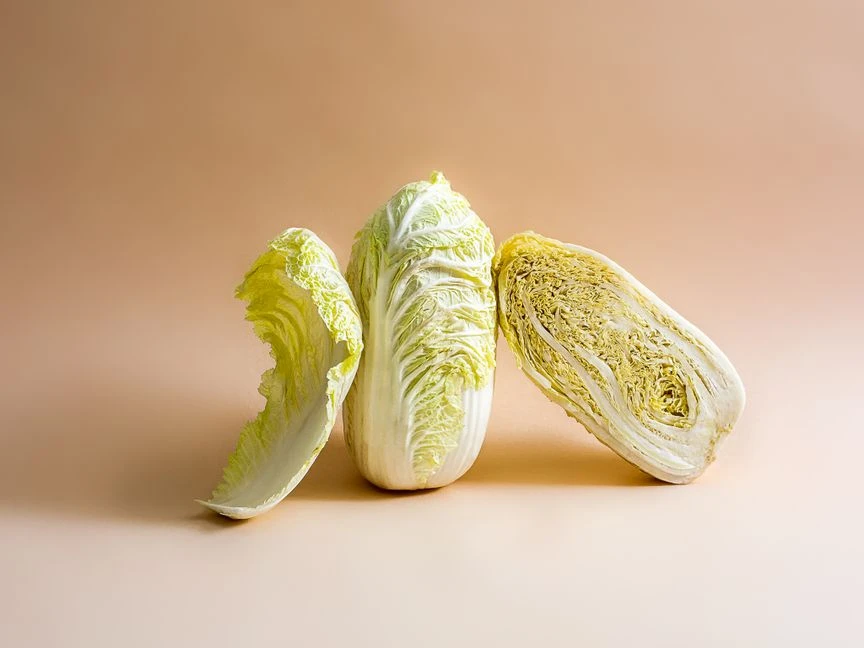
Napa cabbage is a type of Chinese cabbage that has become increasingly popular in many parts of the world.
Originating near Beijing, China, it has been used in East Asian cuisine for centuries and is now widely cultivated across Europe, the Americas and Australia.
Napa cabbage has a mild flavor with subtle notes of sweetness and bitterness.
It can be eaten raw or cooked, making it incredibly versatile.
It’s great for salads, stir-fries, soups and stews.
When cooked properly, Napa cabbage becomes tender yet still retains its crunchy texture.
If you don’t have access to endive but are looking for something similar in taste and texture, try substituting Napa cabbage instead!
4. Chicory Leaves
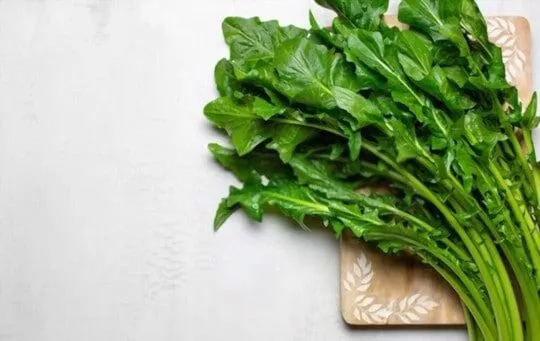
Chicory leaves are a great replacement for endive, offering a similar flavor profile and texture.
Chicory is grown in complete darkness, which accounts for its blanched white, yellow-tipped leaves.
It has a distinctive cigar-like shape, about 12cm long, and the crisp leaves have a mildly bitter flavor.
The bitterness of chicory can be balanced out with sweet ingredients like honey or orange juice.
This makes it an ideal addition to salads or as part of an appetizer platter.
It can also be cooked down into a creamy sauce that pairs well with roasted meats or fish dishes.
For those looking to add some crunch to their meals without relying on endive, chicory leaves are an excellent alternative.
5. Romaine Lettuce

Romaine lettuce, also known as cos lettuce, is a variety of lettuce that has been around for centuries.
It grows in tall heads of sturdy dark green leaves with firm ribs down the center and is much more heat-tolerant than other lettuces.
The flavor of romaine is slightly bitter and nutty, making it an ideal substitute for endive in salads or as a wrap for sandwiches.
When cooked, its texture becomes tender and milder in taste – perfect for adding to soups or sautéing with garlic and olive oil.
Romaine can also be grilled or roasted to bring out its sweetness while still maintaining its crunchy texture.
For those looking to replace endive in recipes, romaine lettuce provides a great alternative that’s both versatile and delicious!
6. Arugula

Arugula, also known as rocket or eruca, is a leafy green vegetable that packs a punch of flavor.
It has a fresh, tart taste with hints of bitterness and pepperiness that make it an excellent substitute for endive in salads and other dishes.
Arugula is an annual plant in the Brassicaceae family and can be found growing wild in many parts of the world.
The leaves are tender yet crisp, making them perfect for adding texture to salads or sandwiches.
When cooked, arugula takes on a slightly nutty flavor that pairs well with roasted vegetables or creamy sauces.
For those looking to replace endive in recipes, arugula can provide a similar crunchy texture while offering up its own unique flavor profile.
7. Spinach
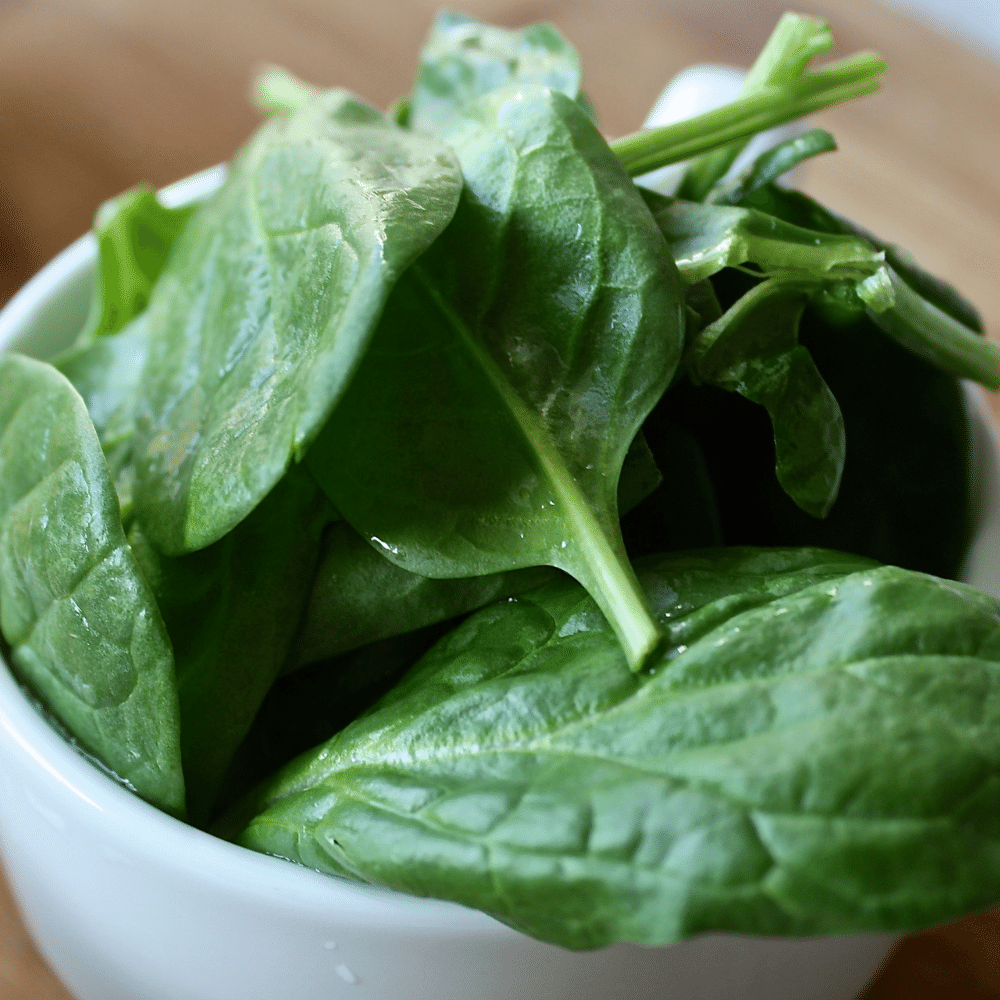
Spinach is a leafy green vegetable that has been enjoyed for centuries.
It is native to central and western Asia, belonging to the order Caryophyllales, family Amaranthaceae, and subfamily Chenopodioideae.
Spinach can be eaten fresh or preserved through canning, freezing, or dehydration.
It has a mild flavor with hints of sweetness and nuttiness.
The leaves are packed with essential vitamins and minerals such as iron, calcium, magnesium, potassium, zinc and vitamins A & C.
When substituting endive in recipes that call for it specifically – like salads – spinach makes an excellent alternative due to its crunchy texture and slightly bitter taste.
It also works well in soups or sautéed dishes where its flavor will blend nicely with other ingredients.
8. Kale
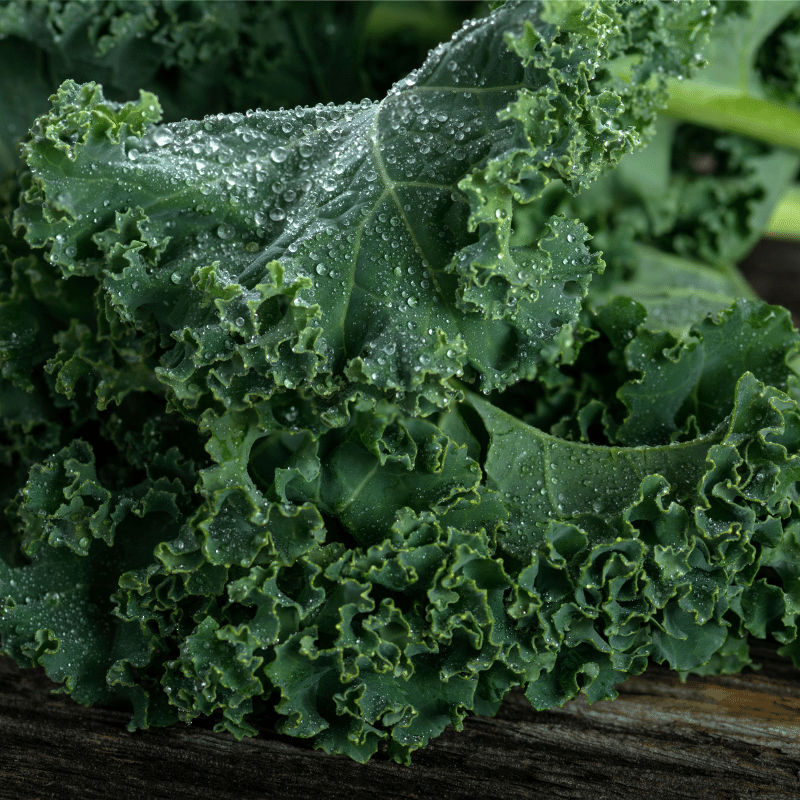
Kale is a leafy green vegetable that belongs to the same family as cabbage, broccoli, and Brussels sprouts.
It has dark green or purple leaves with a slightly bitter taste and crunchy texture.
Kale can be eaten raw in salads or cooked in soups, stews, stir-fries, casseroles, and more.
It’s also great for juicing or blending into smoothies.
Kale is an excellent source of vitamins A and C as well as iron and calcium.
It’s also high in fiber which helps promote digestion health.
When substituting kale for endive, it’s best to cook it lightly so that it retains its crunchy texture while still being tender enough to eat.
Kale can be sautéed with garlic and olive oil or added to soups and stews for extra flavor and nutrition.
9. Escarole
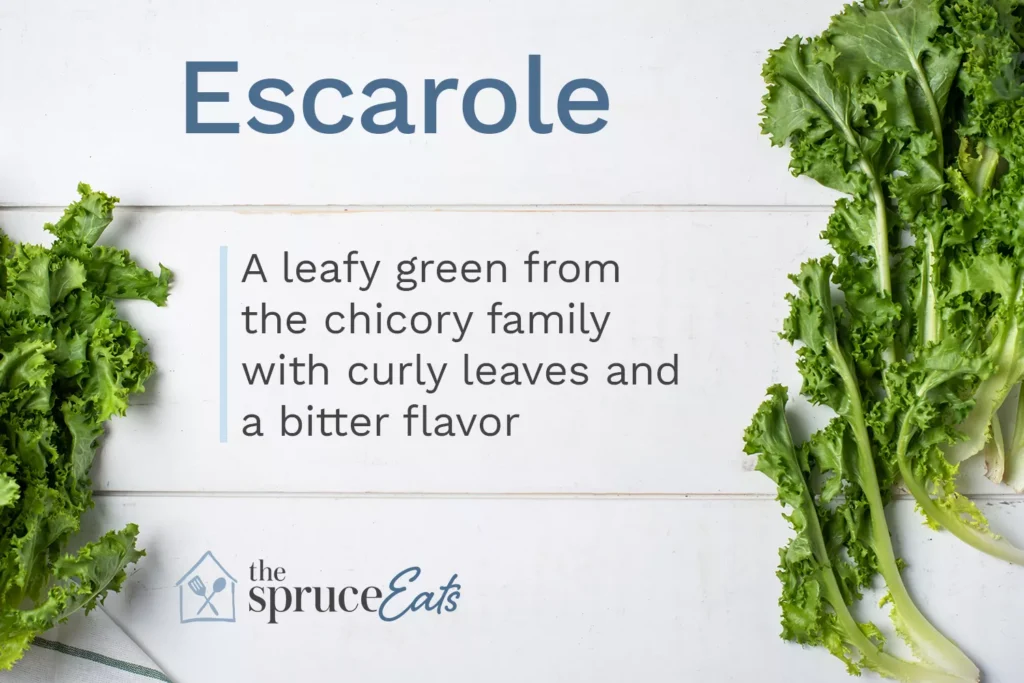
Escarole, also known as Cichorium endivia, is a member of the chicory family.
It has broad, slightly bitter leaves that are pale green in color and have a crunchy texture.
Though it can be eaten raw in salads, escarole is best enjoyed cooked. It can be sautéed with garlic and olive oil or added to soups and stews for extra flavor.
The bitterness of escarole mellows out when cooked, making it an excellent substitute for endive in recipes such as salads or gratins.
It pairs well with other vegetables like mushrooms and onions, as well as meats like bacon or sausage.
Escarole is a great way to add some variety to your meals without sacrificing flavor or texture!
10. Curly Lettuce
Curly lettuce, also known as red leaf lettuce, is a mild and tender variety of lettuce with ruffled red edges.
It has a sweet flavor and pliable leaves that make it an ideal substitute for endive in salads.
The crunchy stem adds texture to dishes while the leaves provide a pleasant contrast to other ingredients like nuts or croutons.
Curly lettuce can be used in sandwiches, wraps, tacos, or even as a bed for grilled proteins.
It’s also great when combined with other lettuces such as romaine or butterhead for added flavor and texture.
For those looking to add some color and crunch to their meals without the bitterness of endive, curly lettuce is an excellent choice!
11. Collard Greens

Collard greens are a type of cruciferous vegetable that belongs to the same species as cabbage, broccoli, and kale.
They have large, dark green leaves with a slightly bitter flavor that pairs well with other ingredients.
When cooked properly, collard greens become tender and succulent while still retaining their crunchy texture.
The best way to prepare them is by steaming or sautéing in oil until they’re just wilted.
These leafy greens can be used as an alternative to endive in salads or sandwiches for a unique twist on your favorite dishes.
Their mild bitterness also makes them great for adding depth of flavor to soups and stews.
Collard greens are an excellent source of vitamins A, C, K, and B6 as well as minerals like calcium and iron – making them a nutritious addition to any meal!
FAQ
Can you substitute spinach for endive?
Endive and spinach are both leafy greens that offer a variety of health benefits.
Spinach has a milder taste than endive but still provides plenty of nutrition. Its tender leaves make it great for adding to smoothies or sautéing as part of a meal.
If you’re out of endive but have some spinach on hand, you can substitute it in recipes that call for endive without sacrificing flavor or texture.
Spinach may not provide the same crunch as endive does when eaten raw, but its mild flavor will still work well in many dishes.
What does endive taste like?
Endive is a leafy green vegetable with a unique flavor profile.
When eaten raw, endives have a crisp texture and slightly bitter taste that adds an interesting contrast to salads.
However, when cooked, the sharpness of the leaves mellows out into a nutty sweetness.
This makes them great for adding depth to soups and stews or as part of side dishes like braised endives with bacon.
Endive can also be grilled or roasted which brings out its natural sweetness even more.
No matter how you choose to prepare it, endive is sure to add an interesting twist to any dish!
What is a substitute for curly endive?
If you’re looking for a substitute for curly endive, consider arugula, radicchio, watercress, or chicory leaves.
Arugula is a peppery green with a slightly bitter taste that works well in salads and sandwiches.
Radicchio has an intense flavor that can be used to add color and crunch to dishes. It’s also great when grilled or roasted.
Watercress is a leafy green with a mild flavor and crisp texture that pairs nicely with other ingredients like nuts and fruits.
Chicory leaves have an earthy flavor similar to endive but are more tender in texture. They make a great addition to salads and soups alike.
Each of these greens can be used as substitutes for curly endive in recipes, adding unique flavors and textures along the way!
Is endive like lettuce?
Endive and lettuce are both leafy greens, but they have some distinct differences.
Endive is a member of the chicory family and has a slightly bitter flavor with crunchy leaves.
It is also richer in vitamins and minerals than lettuce, containing higher levels of Vitamin K, Folate, Vitamin B5, Copper, Manganese, Fiber, and Zinc.
Endive’s daily need coverage for Vitamin K is 87% higher than that of lettuce.
Additionally, endive contains 7 times more Vitamin B5 than lettuce does – 0.9mg compared to 0.134mg respectively.
Lettuce on the other hand is much milder in flavor and contains higher levels of Vitamin A RAE as well as Vitamin B6 when compared to endive.
Both vegetables can be used raw or cooked in salads or sandwiches for added nutrition and flavor – so why not try them both?
Conclusion
In conclusion, endive is a versatile and flavorful vegetable that can be used in a variety of dishes.
However, if you don’t have endive on hand, there are plenty of other vegetables that can be used as a substitute.
The best substitutes for endive are radicchio, watercress, napa cabbage, chicory leaves, romaine lettuce, arugula, spinach, kale, escarole, curly lettuce, and collard greens. Each of these vegetables has a unique flavor and texture that can be used to create delicious dishes.
So, the next time you’re in a pinch, reach for one of these substitutes and give it a try.
You may be surprised at the delicious results!
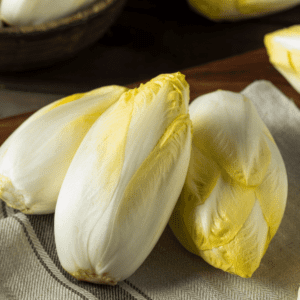
The 11 Best Substitutes For Endive
Ingredients
- Radicchio
- Watercress
- Napa Cabbage
- Chicory Leaves
- Romaine Lettuce
- Arugula
- Spinach
- Kale
- Escarole
- Curly Lettuce
- Collard Greens
Instructions
- Pick your favorite substitute from the list above.
- Follow cooking directions for your selected substitute with the proper ratio of ingredients.
Hi, I'm Benjamin. I love cooking, long walks, and my girlfriend! Here you’ll find simple and delicious recipes that you can make in 30 minutes or less.

